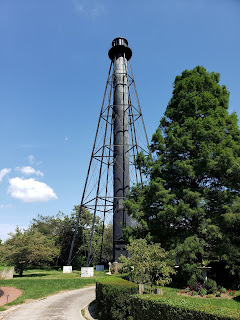Cedar Swamp Wildlife Area: A Vanished Resort and Vanished House

Boaters off the boat ramp at the end of Collins Beach Road in Cedar Swamp Wildlife Area One of the most remote spots we’ve encountered so far along the Delaware Bay Shore Byway is Cedar Swamp Wildlife Area. Phone and GPS signals are spotty. Like many of Delaware’s wildlife areas, its limited development has focused on the needs of hunters and boaters. There are no wildlife viewing trails or information kiosks here. But there were once two significant historic spots here that we tried--and failed--to seek out. One was Collins Beach, one of the beach resorts developed along the Delaware River and Bay during the 1800s. A hotel called Hygenia House was built there in 1850 and a pier for a steamboat added in 1856. Eventually the resort had a restaurant, dance hall, merry-go-round, and bath houses. Illustration of Collins Beach, with Hygenia House on left, from a wayfinding sign at Woodland Beach Wildlife Management Area Tragedy struck in 1878, when a tidal wave from...



